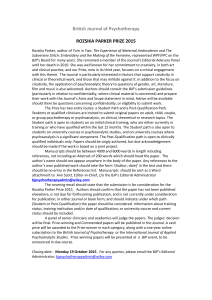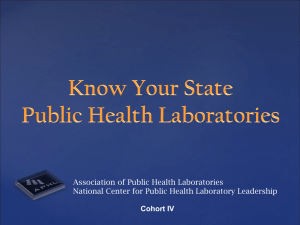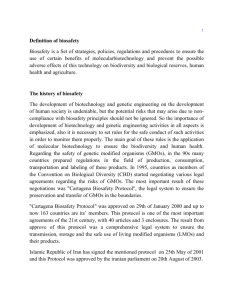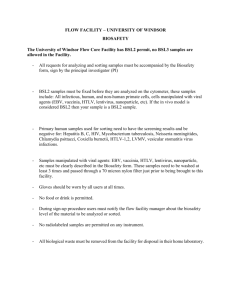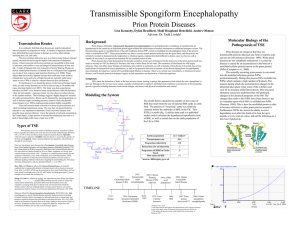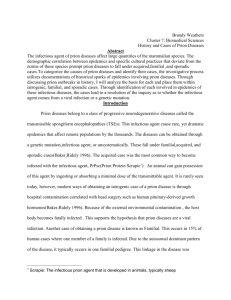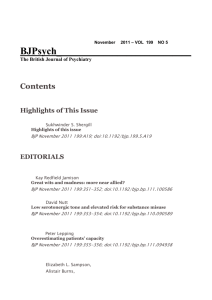Research Assistant – Position #14560
advertisement
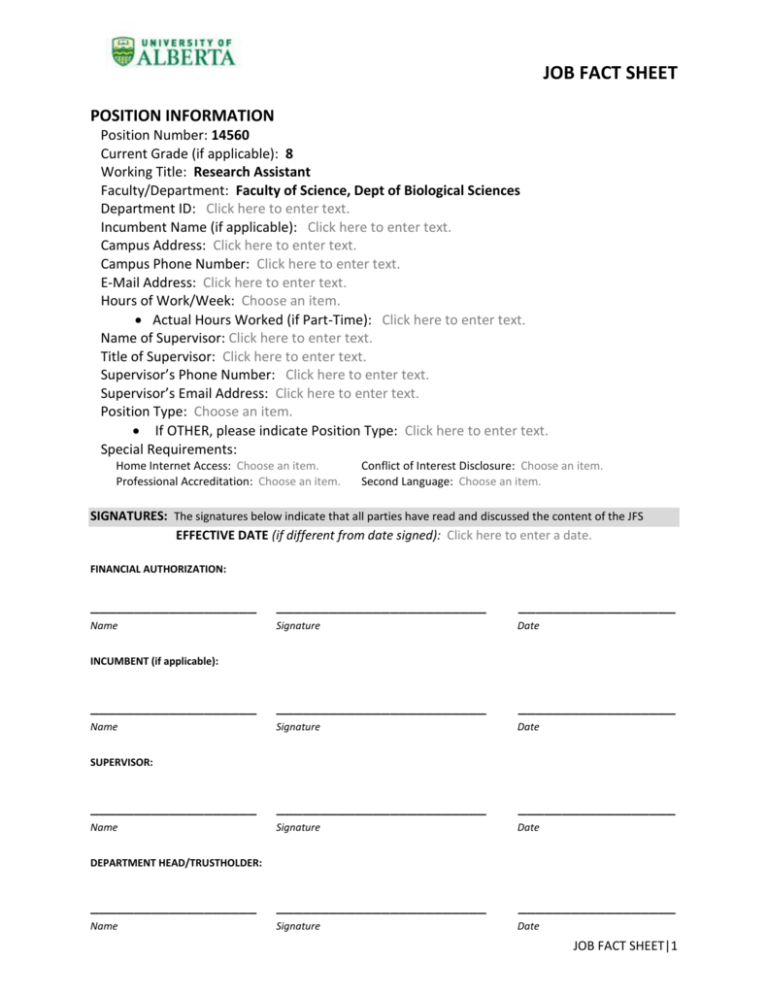
JOB FACT SHEET POSITION INFORMATION Position Number: 14560 Current Grade (if applicable): 8 Working Title: Research Assistant Faculty/Department: Faculty of Science, Dept of Biological Sciences Department ID: Click here to enter text. Incumbent Name (if applicable): Click here to enter text. Campus Address: Click here to enter text. Campus Phone Number: Click here to enter text. E-Mail Address: Click here to enter text. Hours of Work/Week: Choose an item. Actual Hours Worked (if Part-Time): Click here to enter text. Name of Supervisor: Click here to enter text. Title of Supervisor: Click here to enter text. Supervisor’s Phone Number: Click here to enter text. Supervisor’s Email Address: Click here to enter text. Position Type: Choose an item. If OTHER, please indicate Position Type: Click here to enter text. Special Requirements: Home Internet Access: Choose an item. Professional Accreditation: Choose an item. Conflict of Interest Disclosure: Choose an item. Second Language: Choose an item. SIGNATURES: The signatures below indicate that all parties have read and discussed the content of the JFS EFFECTIVE DATE (if different from date signed): Click here to enter a date. FINANCIAL AUTHORIZATION: ___________________ ________________________ __________________ Name Signature Date ___________________ ________________________ __________________ Name Signature Date ___________________ ________________________ __________________ Name Signature Date ___________________ ________________________ __________________ Name Signature Date INCUMBENT (if applicable): SUPERVISOR: DEPARTMENT HEAD/TRUSTHOLDER: JOB FACT SHEET|1 JOB FACT SHEET 1. SIGNIFICANT CHANGES SINCE LAST REVIEW NA 2. POSITION SUMMARY Research Assistant - prion protein biochemistry/cell biology/molecular genetics and Monitor of multiuser labs - supervisory and oversight responsibilities The major activities of this position are to facilitate the daily operations of the Aiken and McKenzie lab in the Centre for Prion and Protein Folding Diseases (Prion Centre), to facilitate the daily operations in two "Biosafety Level 2 Enhanced" (BL2+) multi-user containment laboratories, to monitor the activities of personnel in the enhanced BL2 laboratories and to support and actively participate in prion/transmissible spongiform encephalopathy (TSE) agent and ageing studies research activities. The Aiken/McKenzie laboratory is comprised of a research group with two co-Principal Investigators in one physical laboratory that currently consists of 3 part-time undergraduate students, 2 graduate students, 4 full time technicians, and 2 post-doctoral fellows. It is an expanding group and it is expected that more personnel will be recruited. Within the Prion Centre, there are two separate multi-user BL2+ laboratories where personnel from within the Prion Centre, as well as personnel from the greater university community have access to perform their research in a specialized space with enhanced biosafety procedures. It is anticipated that up to 5 personnel (with varying backgrounds and experience) would be performing research in each of these areas at any given time. The two laboratories are: the main BL2+ Lab on the first floor of the Prion Centre and the Prion Prep Lab in the basement of the Prion Centre. The position will be responsible for monitoring lab personnel in these two BL2+ labs in their adherence to safety and maintenance protocols, and recommending disciplinary actions for any non-complying personnel. 3. RESPONSIBILITIES/ACTIVITIES: Group activities into categories and list in point form each duty performed until the major elements of the position are represented. Review each statement to ensure that it accurately describes what is done and briefly, how it is done. Please indicate the percentage of time spent on each of the major activities listed (50%) Responsible for carrying out and supporting TSE agent and aging research activities: Perform all aspects of TSE agent research and ageing research - particularly protein, cell culture, microbiological and molecular biology techniques Including protein purification, gel separation and immune detection, nucleic acid and protein amplification, enzyme resistance analysis, protein denaturation studies, all using good laboratory practices. New techniques required will be learned through contacts and literature searches. Some of this work will be performed in a BL2+ lab JOB FACT SHEET|2 JOB FACT SHEET Carry out and record directed research activities, and perform troubleshooting research Analyze data, improve techniques, communicate recommended changes to techniques, and plan further experiments in consultation with the PIs and the PDFs Resolving problems may require alternatives to standard procedures and techniques, based on own experience and judgment as well as use of contacts, literature/internet searching Assist in the design of experiments, research methods, data collection protocols and standards Experimental design will be based on discussions with supervisors, at lab meetings and through more informal discussions with lab members and other CPPFD personnel Present data, methods, future plans in lab meetings to a working group of approximately 15 people Provide technical/lab support and act as a resource for others' laboratory experiments Search literature, databases, and catalogue sites to research and support own and others' research and laboratory operations Establish contacts and liaise with other members of the Prion Centre in research ideas, safety, maintenance, waste disposal (30%) Responsible for participating in the daily management of the Aiken/McKenzie lab, overseeing operations and personnel within two BL2+ labs: Monitor Aiken/McKenzie lab personnel in lab husbandry protocols Assist in the research, sourcing, ordering, receiving of new equipment and supplies for both the Aiken/McKenzie lab and the BL2+ labs 4. KNOWLEDGE: Identify the minimum formalized training/education and/or qualifications required to prepare an individual to be functional in the position. Post-secondary education of a Bachelor’s degree or less with up to 18 months to become functional in the role. 5. INDEPENDENCE OF ACTION: Describe the initiative required, the creativity and original thought, and also the amount of direction and control received from the supervisor or standard practices and precedents. A. What types of decisions are made independently? The position will be responsible for determining the day-to-day progress of the experiments/projects that are assigned (i.e. prioritizes tasks, chooses techniques to apply to answer research questions, arranges for necessary supplies and/or equipment to perform experiments, documents methods and records results, researches issues that might arise and/or consults with colleagues, makes interpretations for discussion with the PIs, and makes recommendations for next steps). The position will help plan experiments with the PIs and establish new techniques as required. The position will be required to make independent decisions based on prior experience and knowledge to attain specific JOB FACT SHEET|3 JOB FACT SHEET research goals, and to help maintain daily laboratory operations. This could include, but would not be limited to: Identify potential experimental problems and conduct research to determine a viable solution and discuss results with PIs Order and maintain stock of consumables in Aiken/McKenzie lab and in BL2+ labs Use general knowledge and experience to determine best practices for equipment maintenance Allocate resources (biohazard hoods) and space within the BL2+ labs Take immediate action when witnessing biosafety non-compliance in the BL2+ labs, and report to the Prion Centre Biosafety Research Manager and, if necessary, to the Prion Centre Facility Use Committee B. For what actions is it necessary to consult someone? Are approvals or instructions verbal or in writing? Verbal approval to embark upon a new project, or a complete change in direction of current projects Approvals and instructions are verbal with the expectation that the employee will make written notes that will serve as the basis for the assigned work Verbal approval for contact with internal and external agencies Verbal approval for modifying laboratory to improve safety/operations Verbal reporting to PIs of any major deviations from established protocols Written reporting to the Prion Centre Biosafety Research Manager and the Prion Centre Facility Use Committee of biosafety infractions witnessed in theBL2+ labs 6. CONSEQUENCE OF ERRORS: Identify the extent of losses which result from mistakes in judgment or poor decisions (typical instances, not rare or extreme ones), and the responsibility for safety of others. Minor errors would be calculation errors, omission of reagents, confusion of order in complex procedures which would result in lost materials and research funds, lost time, follow up research could be misdirected. Failure to adhere to operating SOPs and/or manufacturers', guidelines may result in extensive equipment damage and/or human injury. Common/typical errors could occur with negative impact to human health, infrastructure and related secondary impact (e.g., negative press for University of Alberta, time off work, WCB claims, unable to meet project deliverables etc.). Inside the BL2+ labs, a spill of TSE agent may cause health risks to those in the lab. The risk of infection is exceedingly low, but as TSE infections are fatal incurable diseases, exposure could be highly stressful. Incomplete disinfection of TSE agent liquid and/or solid waste would impact the Prion Centre's and the University's reputations. Failure to maintain the required elements and biosafety standards would be detrimental to programs that involve the use of BL2+ risk agents. JOB FACT SHEET|4 JOB FACT SHEET Decisions/opinions could result in waste of consumables; delays in realizing results, lost time due to repeat experiments and lost revenue intended for maintenance and replacement of equipment; and, missed deadlines. Loss or improper storage of irretrievable TSE samples would negatively impact the research group's activities, publications, finances and grant renewals. 7. CONTACTS: Identify the contacts and the purpose of the interaction. A. Inside the University B. Prion Centre members (five different labs/research groups) - to provide and receive recommendations on research study design, updates on projects, safety protocols, maintenance, husbandry, materials and supplies, administration Director of the Prion Centre (Dr Westaway), Prion Centre BioSafety Research Manager and the Prion Centre Facility Use Committee Other University of Alberta researchers/technicians/professors, including collaborators (Dr. Neumann, Dr Belosovic) and members of PrioNet, APRI Biological Sciences Administration - to coordinate personnel needs, including human resources Environmental Health and Safety Biosafety Officer and/or their representatives - to participate in training, provide inventory and required reports, oversee recommended changes in biosafety protocols Outside the University Occasional use of contacts from former positions - within Alberta government, academia, industry Chemical supply companies Members of PrioNet, APRI C. Information Sources Laboratory, Prion Centre and University SOPs/policies/procedures/biosafety manuals Equipment operator manuals, Material Safety Data Sheets (MSDS) PIs, Postdoctoral Fellows, Prion Centre Biosafety Research Manager, Prion Centre Facility Use Committee, BioSci Administration Internet and library literature and database searches, scientific supply catalogues and support services Contacts as above 8. SUPERVISION: If this position is not required to supervise staff, please indicate “n/a”. A. Describe all aspects of formal supervision required of this position. Please be sure to complete Part B. NA JOB FACT SHEET|5 JOB FACT SHEET B. Please indicate how many staff members are supervised by the position. Full-time employees: NA Part-time employees: NA Casual employees: NA 9. PHYSICAL DEMANDS: Describe the degree, frequency, severity, intensity and continuity of physical activity and/or intense visual concentration required. A. Activities Computers are used to operate some equipment, analyze data, prepare reports, present data, administrative tasks, managerial tasks, technical writing and reviewing, updating inventories, communications, scheduling, etc. (20% to 50% of the time) Significant time standing or sitting at the lab bench or at the biohazard hood is expected while working in the lab. This work often is repetitive, but still requires intense visual concentration and mental focus especially when working with TSE agents in the BL2+ lab. Work within the BL2+ labs also requires the personnel to wear specific personal protective equipment (PPE) including gown, over boots and double gloves (20% to 50% of the time) Basic equipment maintenance Some heavy lifting and climbing of ladders Filling, operating, emptying autoclave of liquid and solid sterile materials as well as liquid and solid bio hazardous waste and BL2+ bio hazardous waste B. What types of equipment or tools are used in the job? Micro and regular pipettes, microscopes and attached cameras, biosafety cabinet, fume hood, computers, imaging devices, autoclave, electrophoresis devices, high frequency sonicators, needles/syringes, plate reader, regular and ultra-high speed centrifuges, exacto knives, heating baths and blocks, dishwasher, incubators/shakers, thermal cyclers, Nano drop, spectrophotometer, pH meters; general laboratory equipment and standard operations/ maintenance tools. Anything new that is required will be learned on the job. 10. WORKING CONDITIONS: Describe the disagreeable aspects of the job environment in relation to employee safety and comfort, and the severity and frequency of exposure to workplace hazards. Both Biosafety Level 2 and BL2+ facilities will be used. Working with TSE agents requires Personal Protective Equipment such as gown, double gloves, extra booties to be worn at all times; strict safety protocols are in place and must be adhered to in the BL2+ labs. Working with flammable solvents poses a fire risk. There are other hazardous and mutagenic chemicals in the laboratory. Some heavy lifting and JOB FACT SHEET|6 JOB FACT SHEET ladder climbing is required. There is also constant equipment noise. Occasional noxious odours of organic chemicals. In the basement BL2+ lab there is no natural light (no windows). Probable paper cuts, bumps and bruises in the office and research lab. Skin should never be pierced in the BL2+ labs. 11. SIMILAR POSITIONS AT THE UNIVERSITY OF ALBERTA: Please list any position numbers, titles, departments or incumbent names that may be considered to be similar. Enter text here. 12. ORGANIZATION CHART: An organization chart is mandatory for the evaluation process to be completed. You may include this as a separate attachment or file may be pasted/ embedded below JOB FACT SHEET|7

